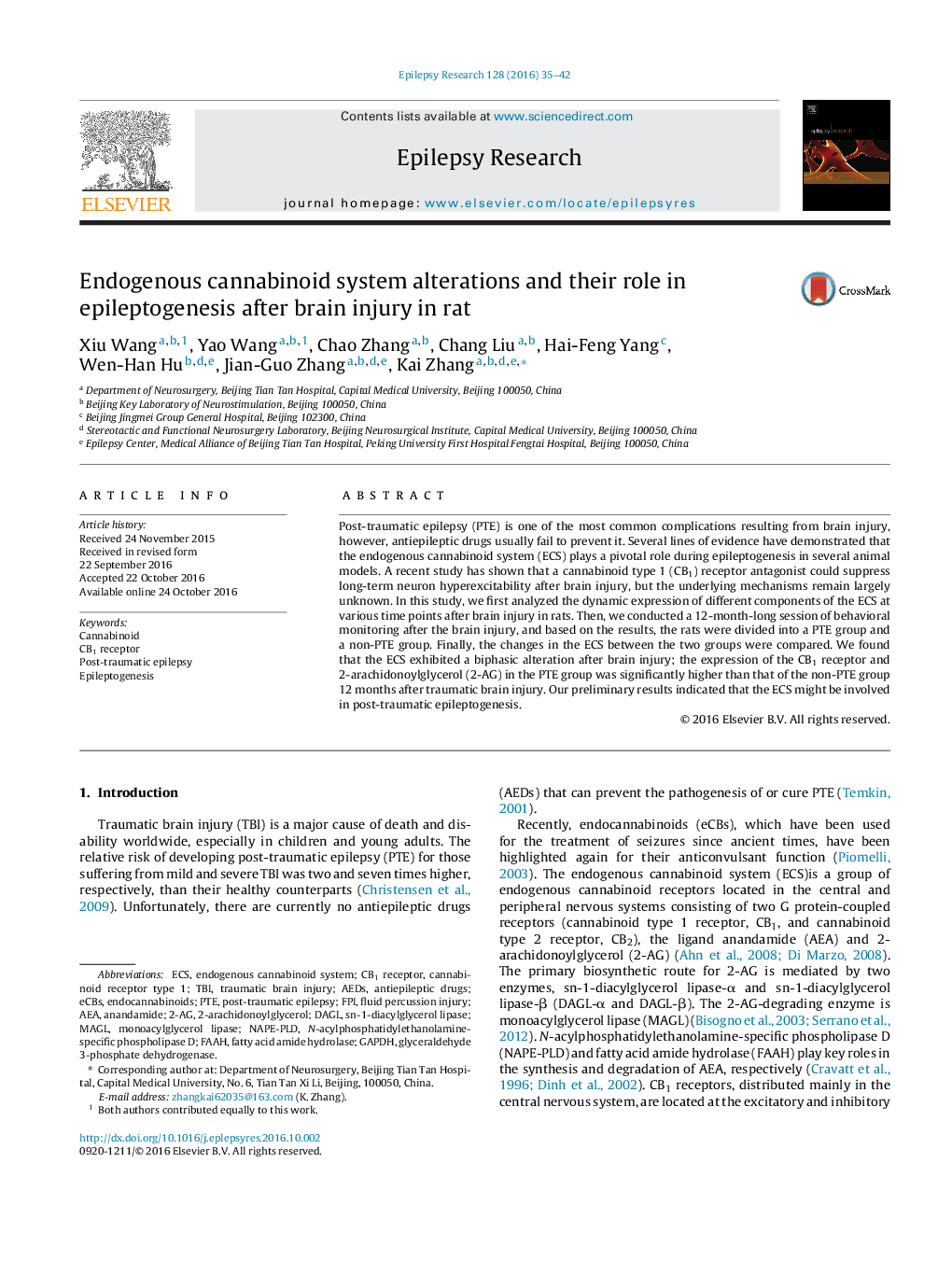| Article ID | Journal | Published Year | Pages | File Type |
|---|---|---|---|---|
| 5628620 | Epilepsy Research | 2016 | 8 Pages |
â¢The number of rats with PTE increased over time following brain injury.â¢Biphasic changes in ECS expression were found in rat hippocampi after brain injury.â¢The expression of the ECS in the PTE group was higher than that in the non-PTE group.
Post-traumatic epilepsy (PTE) is one of the most common complications resulting from brain injury, however, antiepileptic drugs usually fail to prevent it. Several lines of evidence have demonstrated that the endogenous cannabinoid system (ECS) plays a pivotal role during epileptogenesis in several animal models. A recent study has shown that a cannabinoid type 1 (CB1) receptor antagonist could suppress long-term neuron hyperexcitability after brain injury, but the underlying mechanisms remain largely unknown. In this study, we first analyzed the dynamic expression of different components of the ECS at various time points after brain injury in rats. Then, we conducted a 12-month-long session of behavioral monitoring after the brain injury, and based on the results, the rats were divided into a PTE group and a non-PTE group. Finally, the changes in the ECS between the two groups were compared. We found that the ECS exhibited a biphasic alteration after brain injury; the expression of the CB1 receptor and 2-arachidonoylglycerol (2-AG) in the PTE group was significantly higher than that of the non-PTE group 12 months after traumatic brain injury. Our preliminary results indicated that the ECS might be involved in post-traumatic epileptogenesis.
